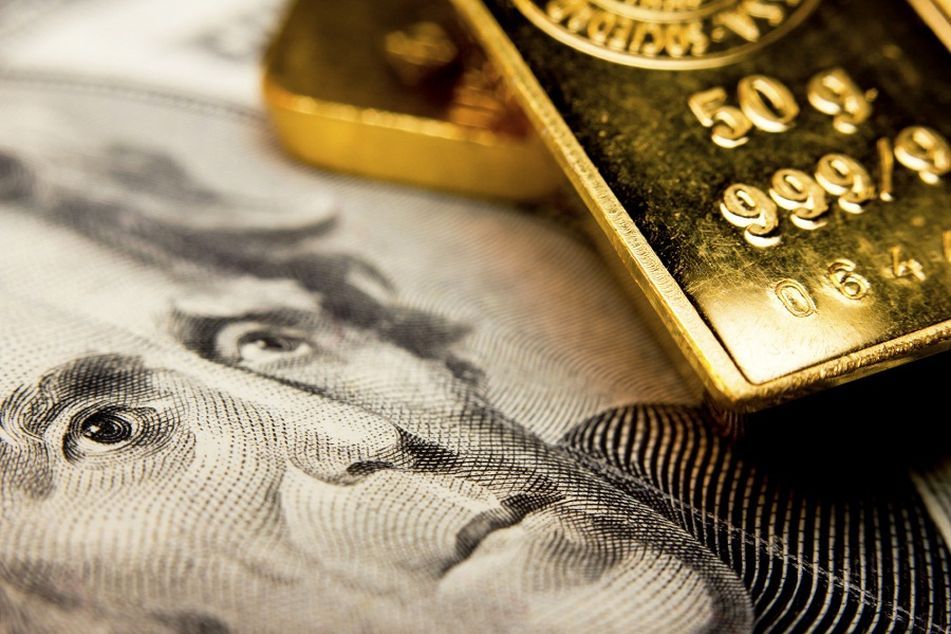Gold’s price drop puts traders and investors at odds

A 24% gain since January and an 8% drop since July
The flat-lining price of gold in October reflects a unique split between traders and investors in the precious metal.
While the price of gold, at around $1,260 an ounce, is up nearly 24% from the start of the year, it has fallen by nearly 8% since peaking in early July.
The rally in July was driven largely by new uncertainty following the surprising Brexit vote. But the wobbling price of gold over the past few weeks is being interpreted as reflecting a tight list of growing concerns related to the presidential election, a Fed rate hike, and global monetary policies.
“Gold is an asset class that can trade off many factors,” said Lara Magnusen, portfolio strategist at Altegris Advisors.
On one side, she explained, there is the growing potential for a December interest-rate hike by the Federal Reserve. That prospect has institutional investors backing away from gold in favor of the potentially higher-yielding sovereign bonds.
Meanwhile, Ms. Magnusen explained, the more retail-oriented investors in exchanged-traded funds have been adding gold exposure as a flight to safety, which is often related to uncertainty surrounding an unprecedented presidential election between two unpopular candidates.
“If you’re worried, you put your capital in gold,” she said. “There might be an institutional camp that’s looking at gold versus Treasuries, but the average investor sees that rates are still incredibly low, and they’re looking at some way to buffer their portfolios from other risks.”
There is no denying the impact on gold prices from any hint that the Fed might move on interest rates, but the fact that Treasury bond yields fell last December after the Fed hiked a quarter point should give gold traders some pause.
“Frequently in the gold trade the traders have a tendency to focus on the short-term developments,” said Trey Reik, senior portfolio manager at Sprott Asset Management.
Mr. Reik is pegging October’s gold-price slump to a triad of monetary policy events that occurred within a 24-hour period earlier this month.
“There were a couple of Fed regional presidents talking hawkish on Oct. 3, and the next morning there were rumors of an ECB taper and that Japan was considering moves to weaken the yen,” he said. “But all of the things that make gold an interesting diversifier have continued to be more supportive for gold.”
Ben Ross, portfolio manager at Cohen & Steers, agrees that institutional investors are mulling gold from one perspective by trading futures, and retail investors are eyeing gold as a necessary safety play.
“Institutions are certainly looking at the move for rates and getting a little scared about holding gold, because the correlation between higher rates is very strong,” he said. “But gold also looks like it has become a buying opportunity for some folks.”
In terms of the election factor, Mr. Ross believes the market is already factoring in a win by Democratic nominee Hillary Clinton over Republican nominee Donald Trump.
Anything other than that could upset the markets, he said.
“Barring some bad U.S. macro data and a huge change to interest rate expectations, gold is probably going to be dead money for a while,” he said. “As we get closer to the election, gold could see some safe-haven buying, but it’s not clear if it will be enough to offset the prospect of higher rates.”
Despite the drop since July and the lull since the start of October, Paul Schatz, president of Heritage Capital Management, said the bull market in gold that began about 15 years ago remains alive and well.
“We’re getting close to a short or intermediate-term buy for gold, but I’m not sure we’re there yet,” he said. “Another drop would make me feel better, because I think gold has a little more downside, but long term I see gold at $2,000 by the end of the decade.”
Learn more about reprints and licensing for this article.








